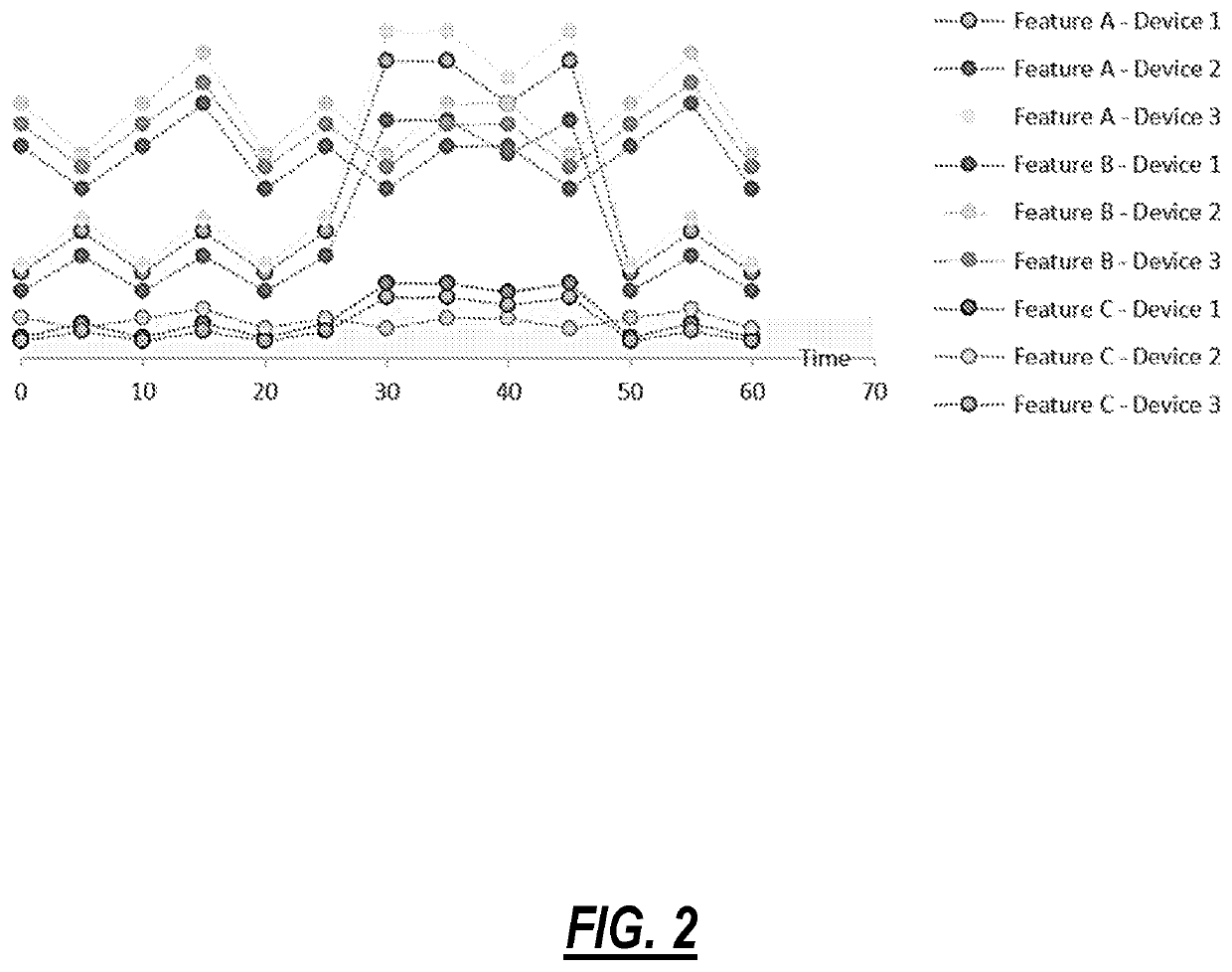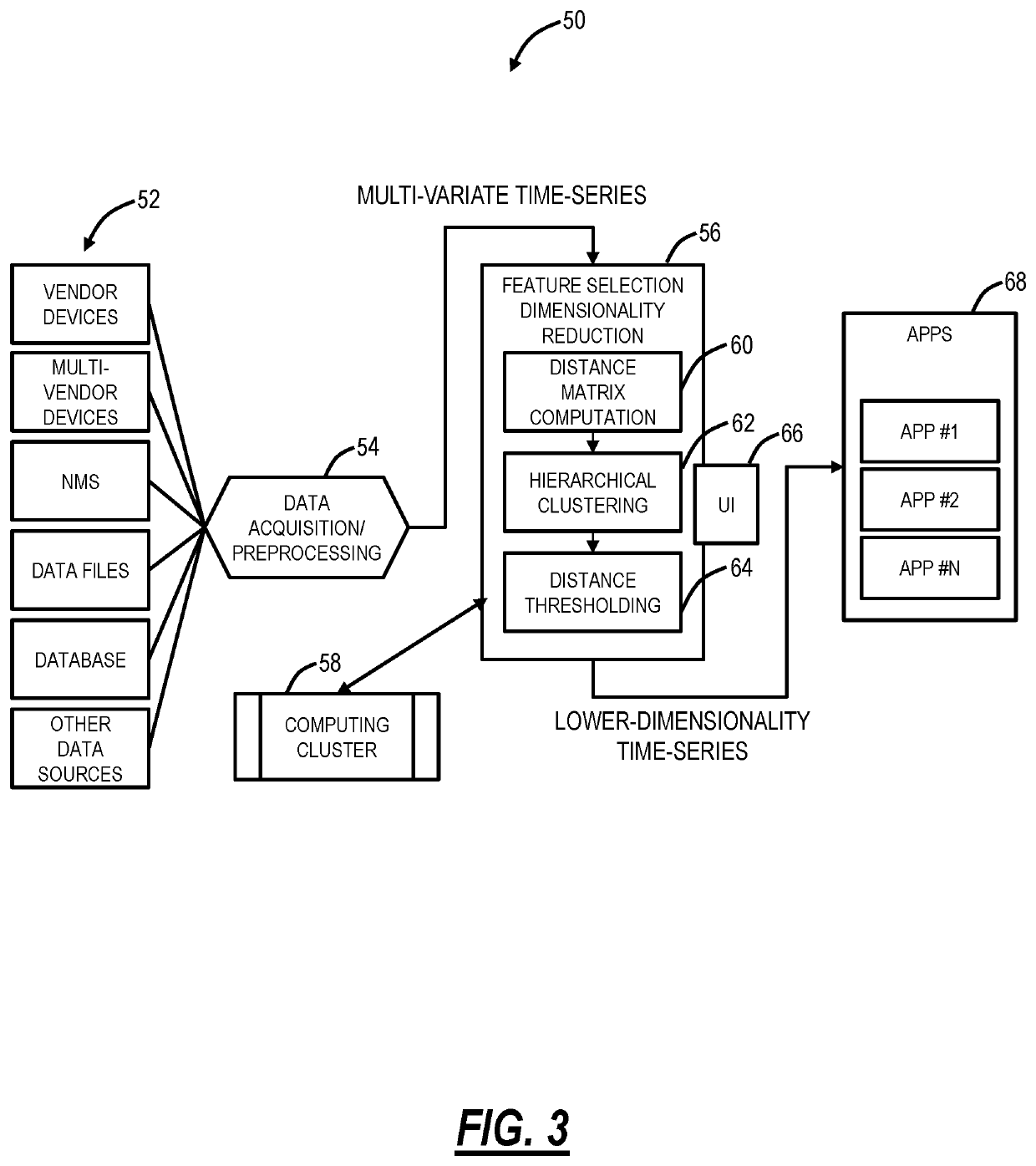Systems and methods for automated feature selection and pattern discovery of multi-variate time-series
a multi-variate time-series and feature selection technology, applied in the field of data analytics, can solve the problems of missing satisfying solutions for reducing the dimensionality of multi-variate time-series (such as sensor data, pms, etc.), increasing computational complexity exponentially, and reducing the dimensionality of multi-variate time-series. , to achieve the effect of improving the computational complexity of one or more applications and reducing the dimensionality of multi-variate times-series
- Summary
- Abstract
- Description
- Claims
- Application Information
AI Technical Summary
Benefits of technology
Problems solved by technology
Method used
Image
Examples
Embodiment Construction
[0039]In various embodiments, the present disclosure relates to systems and methods for automated feature selection and pattern discovery of multi-variate time-series. The systems and methods provide a feature-selection engine which can be used in network analytic applications. This engine is based on techniques that are horizontally scalable, making them suitable to analyze time-series / PMs from arbitrary large networks. The same clustering techniques can also be used to feed semi-supervised learning algorithms that are expected to improve the performance of Machine Learning (ML) applications in the presence of sparse (low statistics) amount of labeled data for the ML training and testing.
[0040]ML can be leveraged for analyzing incoming PM data from networks to derive valuable insights. The systems and methods address how to choose a particular set of PMs. Without the systems and methods, expert knowledge is required about the behavior of the equipment being monitored to hand pick t...
PUM
 Login to View More
Login to View More Abstract
Description
Claims
Application Information
 Login to View More
Login to View More - R&D
- Intellectual Property
- Life Sciences
- Materials
- Tech Scout
- Unparalleled Data Quality
- Higher Quality Content
- 60% Fewer Hallucinations
Browse by: Latest US Patents, China's latest patents, Technical Efficacy Thesaurus, Application Domain, Technology Topic, Popular Technical Reports.
© 2025 PatSnap. All rights reserved.Legal|Privacy policy|Modern Slavery Act Transparency Statement|Sitemap|About US| Contact US: help@patsnap.com



